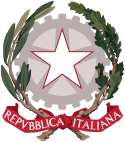A referendum is a direct vote in which an entire electorate is invited to vote on a particular proposal. This may result in the adoption of a new law. In some countries, it is synonymous with a plebiscite or a vote on a ballot question.

In political science, an initiative is a means by which a petition signed by a certain minimum number of registered voters can force a public vote in parliament called an indirect initiative or via a direct initiative, the latter then being dubbed a Popular initiated Referendum.
The regions of Italy are the first-level administrative divisions of Italy, constituting its second NUTS administrative level. There are 20 regions, of which five are constitutionally given a broader amount of autonomy granted by special statutes.
A constitutional amendment is a modification of the constitution of a polity, organization or other type of entity. Amendments are often interwoven into the relevant sections of an existing constitution, directly altering the text. Conversely, they can be appended to the constitution as supplemental additions (codicils), thus changing the frame of government without altering the existing text of the document.

Latvia elects on national level a legislature. The Saeima has 100 members, elected for a four-year term by proportional representation with a 5% threshold. An unmodified Sainte-Laguë method is used to allocate seats. The parliamentary elections are held on the first Saturday of October. Locally, Latvia elects municipal councils, consisting of 7 to 60 members, depending on the size of the municipality, also by proportional representation for a four-year term.

A referendum, in the Italian legal system is a request directed to the whole electorate to express their view on a determined question. It is the main instrument of direct democracy in Italy.

This article provides information on elections and election results in Austria.
Estonia elects a legislature on the national level. The Riigikogu has 101 members, elected for a four-year term by proportional representation. A head of state - the president - is elected for a five-year term by parliament or an electoral college. Locally, Estonia elects local government councils, which vary in size. Election law states the minimum size of a council depending on the size of municipality. Local government councils are elected by proportional representation too.

Italy elects, at the national level, a Parliament consisting of two houses: the Chamber of Deputies with 630 members; and the Senate of the Republic with 315 elected members, plus a few senators for life. The President of the Republic is elected for a seven-year term by the two houses of Parliament in joint session.
Five nationwide popular referendums were held in Italy on 8 November 1987, with three questions about nuclear energy after the Chernobyl disaster, and two questions about justice. Voting day had been postponed of six months, according to the Italian Constitution, because of the snap election of spring.

A constitutional referendum was held in France on 5 May 1946. Voters were asked whether they approved of a new draft Constitution proposed by the Constituent Assembly elected in 1945.

The Moldovan referendum of 2010 was a nationwide referendum in Moldova held on 5 September on whether or not the country should amend the Constitution of Moldova to return to direct popular election of the president. Since 2001, the president had been indirectly elected by Parliament, with a supermajority of 61 seats required for election.. The voters are asked to answer the following question "Would you agree with the Constitutional amendment, which would allow the election of the President of the Republic of Moldova by the entire population?", voting for one of the proposed options: “Yes (for)” or “No (against)”. Of those who had cast their vote, 87.83% chose "Yes". However, the referendum did not pass because only 30.29% of voters turned out, short of the necessary 33% for the referendum to be considered valid.
Three referendums were held in Switzerland during 1894. The first was held on 4 March on a federal resolution to amend the constitution regarding trade and commerce, and was rejected by a majority of voters and cantons. The second was held on 3 June on a popular initiative on the right to work, and was rejected by a majority of voters and all cantons. The third was held on 4 November 1894 on a popular initiative on a partial contribution to tariffs from the cantons, and was also rejected by a majority of voters and cantons.
Four referendums were held in Switzerland during 1903. The first was held on 15 March on a federal law on tariffs, and was approved by 59.6% of voters. The second, third and fourth were all held on 25 October concerning an amendment to the federal criminal law, a popular initiative on Swiss residents electing the National Council and an amendment to article 32bis of the constitution. All three were rejected by voters.
Three referendums were held in Switzerland during 1908. The first two were held on 5 July on amending the federal trade law and on banning absinthe. Both were approved by a majority of voters and cantons. The third was held on 25 October on adding article 24bis to the constitution, concerning hydroelectricity and electricity. It was also approved by a majority of voters and cantons.
Four referendums were held in Switzerland during 1923. The first two were held on 18 February on protective custody and a federal resolution on relations with France over the former free trade area of Haute-Savoie. The third was held on 15 April on a popular initiative "for the ensuring of people's rights in questions regarding tariffs", whilst the fourth was held on 3 June on amending articles 31 and 32bis of the constitution regarding alcohol. All four were rejected by voters.
Four referendums were held in Switzerland during 1939. The first two were held on 22 January on a popular initiative on civil rights and a federal resolution on the restricted use of the urgency clause in the constitution. The third was held on 4 June on a constitutional amendment regarding the funding for government policies on defence and unemployment, and was approved by voters. The fourth was held on 3 December on a federal law on the employment status and insurance for federal civil servants, and was rejected by voters.
Three referendums were held in Switzerland during 1947. The first was held on 18 May on a popular initiative for "economic reform and rights concerning work", and was rejected by voters. The second and third were both held on 6 July on revising the articles of the federal constitution covering the economy and a federal law on aged and bereavement insurance. Both were approved by voters.
Four referendums were held in Switzerland during 1949. The first two were held on 22 May on revising article 39 of the federal constitution concerning the Swiss National Bank and a federal law amending a 1928 law on measures against tuberculosis, with both rejected by voters. The third was held on 11 September on a popular initiative "for the recurrence to direct democracy" and was narrowly approved. The final one was held on 11 December on a federal law to amend the employment status of federal civil servants, and was also approved.
Seven referendums were held in Switzerland during 1958. The first was held on 26 January on a popular initiative "against the abuse of economic power", concerning unfair competition, and was rejected by voters. The second was held on 11 May on the federal budget, and was approved by voters. The third and fourth were held on 6 July on introducing a new section 27ter to the constitution concerning films, and a petition to improve the road network, both of which were approved. The fifth referendum was held on 26 October on instituting a 44-hour working week, and was rejected by voters. The final two were held on 7 December on a constitutional amendment on gambling and approving a treaty with Italy on a hydroelectric power scheme on the River Spöl, with both approved.








